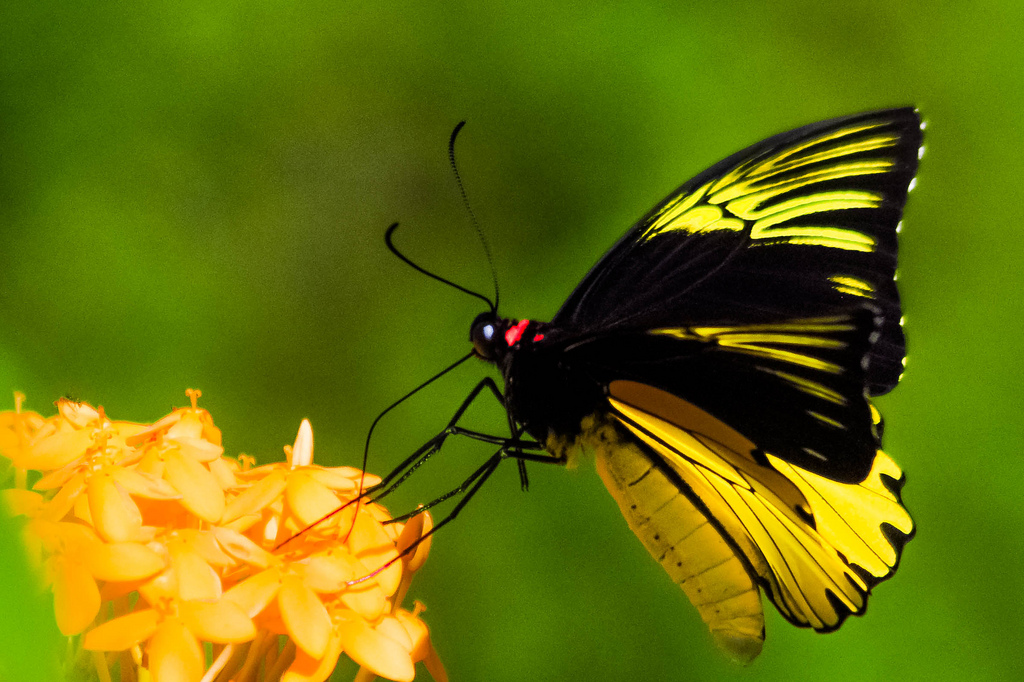Common birdwing
(Troides helena)

Description
Troides helena, also known as the Common Birdwing, is a species of butterfly belonging to the family Papilionidae. This beautiful butterfly is widely distributed across the Southeast Asian region, including India, Sri Lanka, Myanmar, Thailand, Malaysia, Indonesia, and the Philippines. In this article, we will delve deeper into the taxonomy, morphology, behavior, and habitat of Troides helena. Taxonomy The genus Troides is a group of large and colorful butterflies commonly known as birdwings. These butterflies are found mainly in the Southeast Asian region and are known for their striking appearance. Troides helena was first described by Carl Linnaeus in 1758, and its scientific name has remained unchanged ever since. The butterfly belongs to the subfamily Papilioninae, which is characterized by their bright colors and large size. Morphology Troides helena is a large butterfly with a wingspan of 140-190 mm. The upper side of the wings is black, with a series of yellow spots on the hindwings. The forewings have a broad yellow band along the outer edge, and the hindwings have a long, thin tail. The undersides of the wings are similar to the uppersides but have a pale greenish-yellow background color. The male and female Troides helena differ in their appearance, with the male being more brightly colored than the female. The male has a more extensive yellow band on the forewing, and the yellow spots on the hindwing are larger and more numerous. The male also has a more extended tail on the hindwing, while the female has a shorter tail. Behavior Troides helena is a diurnal butterfly, meaning it is active during the day. The butterfly can be found flying near the canopy of trees, where it feeds on the nectar of flowers. The males are known to be territorial, and they will defend their territory against other males. The females lay their eggs on the leaves of the host plant, which is usually a member of the Aristolochia family. The larvae of Troides helena are black with white spots and have long spines. The larvae feed on the leaves of the host plant and undergo several instars before pupating. Habitat Troides helena is found in a variety of habitats, including forests, woodlands, and gardens. The butterfly is often found near rivers and streams and is more abundant in areas with a high rainfall. The butterfly can be found at elevations up to 2000 meters above sea level. Conservation Troides helena is not currently listed as an endangered species, but its populations have declined in some areas due to habitat loss and over-collection. The butterfly is highly valued by collectors, and this has led to a significant decline in its numbers in some areas. In Malaysia, the butterfly is protected by law, and its collection is strictly regulated. Conclusion Troides helena is a beautiful and fascinating butterfly that is found in Southeast Asia. Its striking appearance, behavior, and habitat make it a popular subject for butterfly enthusiasts and researchers alike. The butterfly's decline in some areas highlights the need for conservation efforts to protect its populations and habitat. As we continue to study and learn about Troides helena, we can gain a deeper appreciation for the incredible diversity and beauty of the natural world.
Taxonomic tree:







